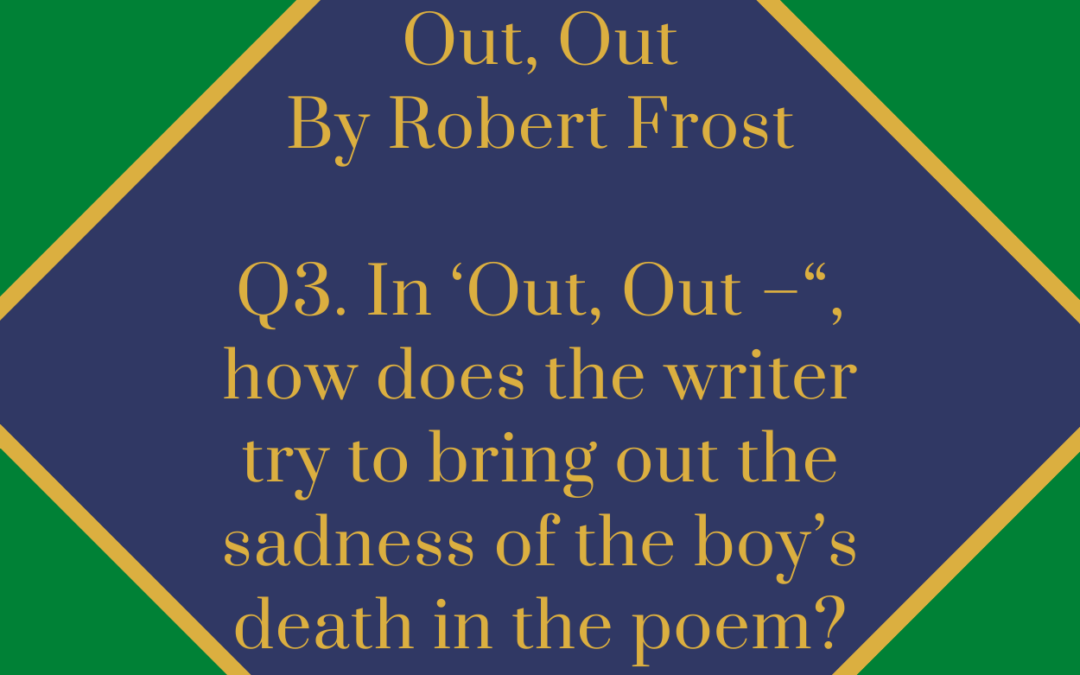Edexcel English IGCSE: Out, Out- by Robert Frost
Q3. In ‘Out, Out –“, how does the writer try to bring out the sadness of the boy’s death in the poem?
In your answer you should write about:
- The time and setting;
- What happened to cause the fatal accident;
- The reactions of the boy and the other people;
- The use of language.
You should refer closely to the passage to support your answer. You may use brief quotations.
Edexcel English IGCSE Model Essay by an Expert
The tragedy of the child’s death in “Out, Out –” lies in the accident’s preventability. There is also terrible poignancy in the apparent insignificance of the fatal accident, as the other people in the poem seem not to react as emotionally as we might expect.
The writer brings out the tragedy of the boy’s death by hinting at what he could have been doing instead of working with dangerous equipment. Frost describes the beautiful natural surroundings: “five mountain ranges” are nearby, suggesting that this would be a good place for a child to play. Instead, the boy is working with a violent, ugly saw which “made dust”: an ugly addition to the otherwise idyllic scene. The writer reflects on how the accident could have been avoided if he had been “saved from work” a little earlier. The use of the word “saved” is particularly poignant, since being “saved” from work would have resulted in saving his life.
Timing is everything. The accident takes place at the very end of the day: there was a sunset, and the poet states that “day was all but done”. This shows how close the boy was to safety. Ironically, it is the very word which should have ceased the boy’s work – “Supper” – which prompts the accident to happen. It is at this word that the saw “leaped out at the boy’s hand”. The saw is personified here, which avoids an accurate description of the accident; it reflects the speed with which the fatal injury occurred. The closeness of the child to freedom and safety brings out the tragedy of the boy’s death.
The boy’s reaction to his injury is a tragic combination of childish and adult. Like a child, he laughs at first, as if he hasn’t fully understood, and he holds up his hand towards the others, as if hoping that they can make it better. However, he then undergoes the heart-rending realisation that the situation is very serious: “the boy saw all”. The assonance and monosyllables in this phrase slow the pace of the poem, reflecting the gravity of the injury, and the slow realisation of the boy that his life might be in danger. The poet is reticent about the reactions of others at this crucial moment of the boy’s panic. Even the reactions to the boy’s shocking death are surprisingly understated: “that ended it” and “no more to build on there” are colloquial phrases, suggesting a casual attitude to the death. This is particularly sad, as it suggests that such deaths are not infrequent.
For the reader, the death of the child is unspeakably tragic, particularly because the boy should not have been working in the first place, and because he was so close to safety. There is also great poignancy in the observers’ resigned attitude to the death.



